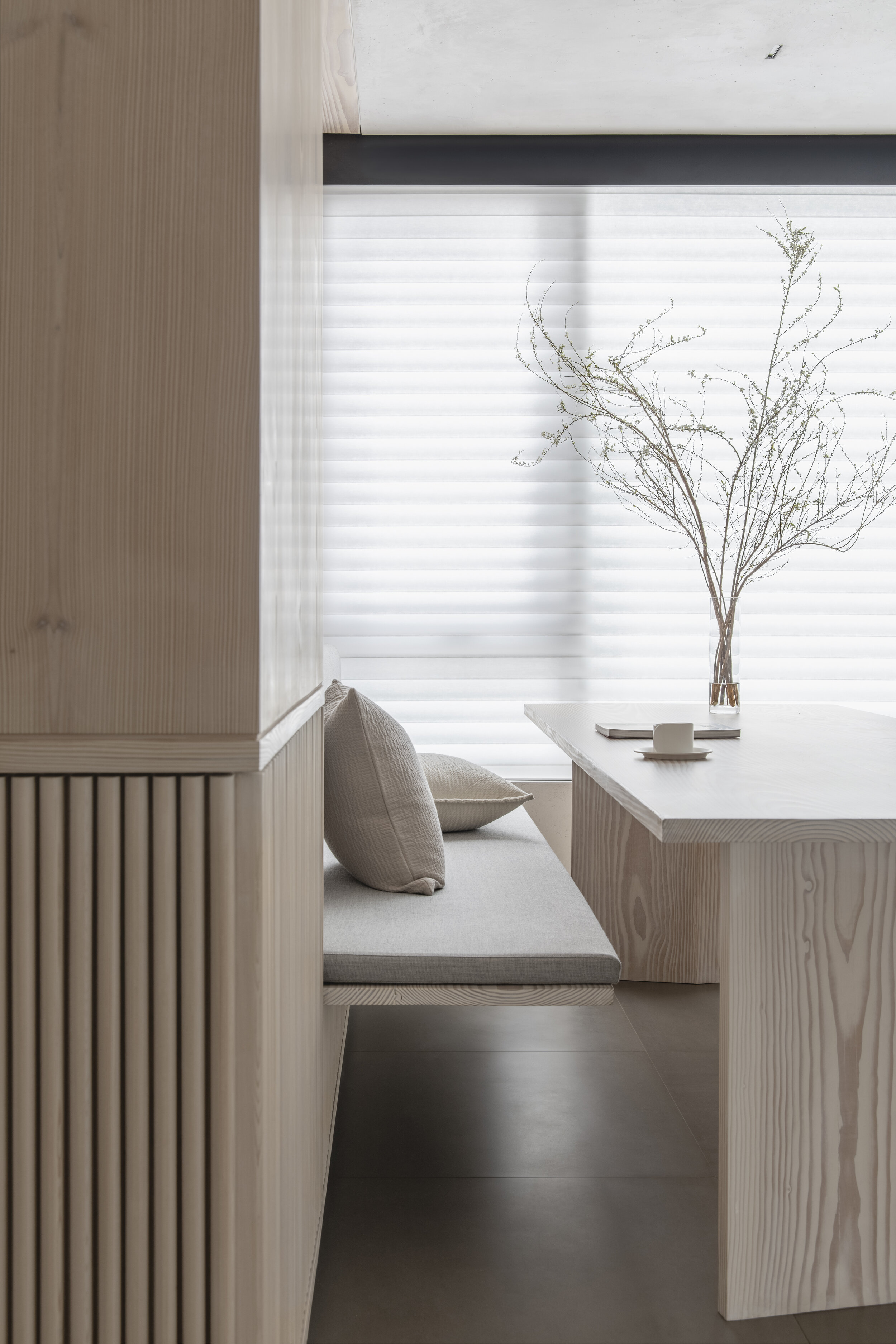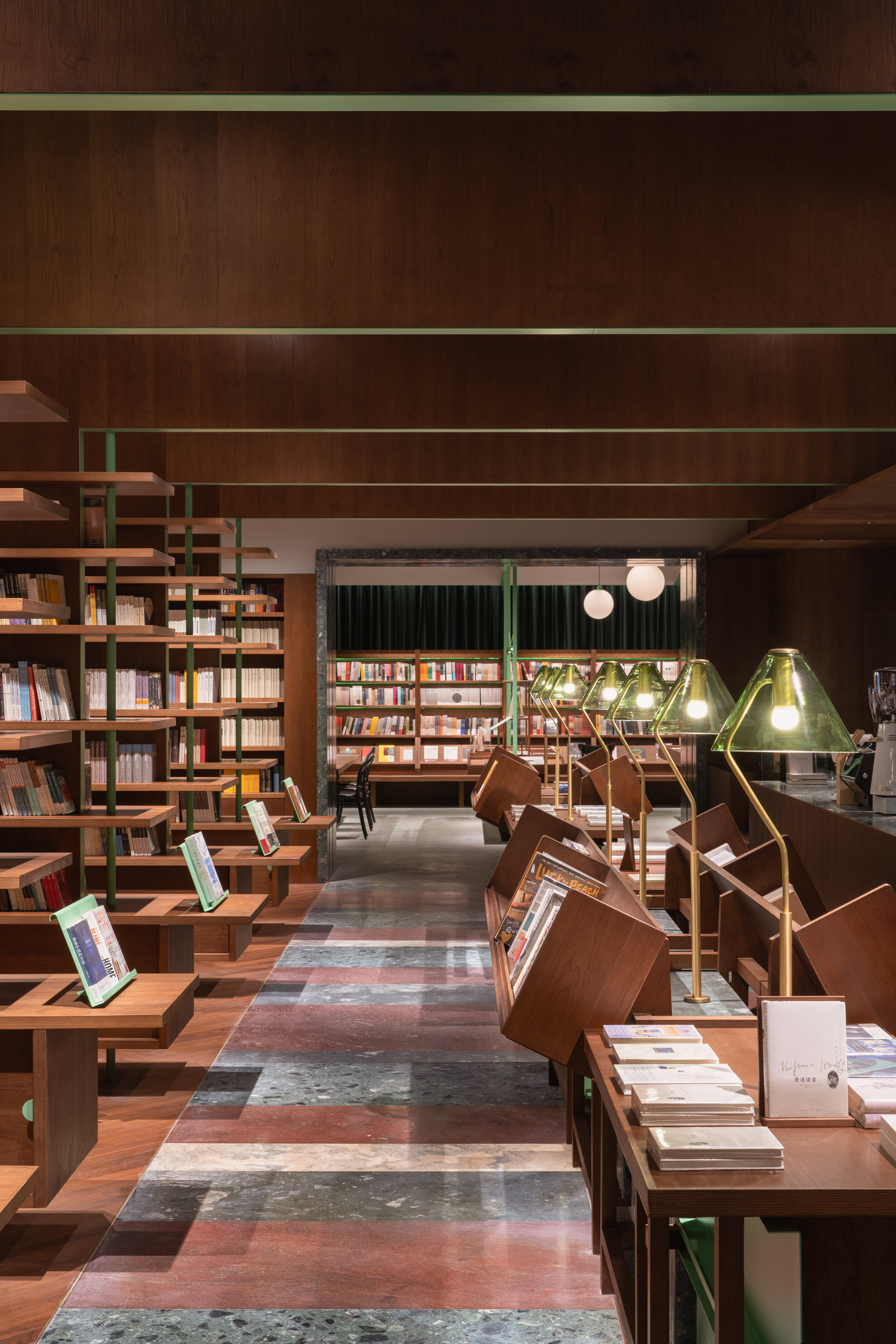10 QUESTIONS WITHWEN STUDIO
Founded by Logan Liu and Chris Lee, Wen Studio is a Shanghai-based photography and design studio. We sat down with the duo for an exclusive interview on their approach to visual solutions; specialising in architectural and interior photography.
Interview by:
New Norm Magazine
Photography by:
Wen Studio
Social:
1. What influenced your decision to pursue a career in photography?
Wen Studio: Our own personal interests and the presentation of different opportunities was our gateway into the field, where we now focus on the research of visual expression and presentation.
1. 你們為什麼會選擇成為一名專注於研究建築及室內設計攝影師?
Wen Studio: 興趣和機緣讓我們進入了這個領域,我們一直專注於視覺的研究。
2. What influenced your decision to pursue a career in photography?
WS: Our own personal interests and the presentation of different opportunities was our gateway into the field, where we now focus on the research of visual expression and presentation.
2. 在學習攝影的過程中,你們曾經受到過一些其他的攝影師或設計師所啟發嗎?
WS: 那太多了,我們覺得每個人都值得我們去學習,而給了我們很大的啟發是攝影師Hufton and Crow。
Bar O - Office AIO
3. Architectural and interior photography are quite different from portrait and landscape photography. How do you shoot the soul and character of architecture which are often seen as still scenes?
WS: There is no difference in the essence of photography, it is all about recording what is observed. The buildings that we photograph were created by people. People, animals, and the natural environment are created by the creator. If architecture has a soul and personality, we are to personify architecture. Architecture is a person created by man, with its own emotions, anger, sorrow, and death. The architectural photography that we understand is an expression of life and emotions.
3. 建築及室內攝影,有別於人像攝影及風景攝影,因為都是靜止的景象,那麼你們是如何去拍出屬於建築的靈魂和性格?
WS: 攝影的本質沒有區別,都是把觀察到的記錄下來。我們拍攝的建築和室內都是人創造的。而人,動物,自然風景是造物主創造的。如果說建築有靈魂有個性,就是把建築擬人化,建築是人創造出來的人。建築也有喜怒哀樂,也會生老病死,我們理解的建築攝影是一種生命情感的表達。
4. You've mentioned that Wen Studio provides visual solutions for architectural and interior design studios. Could you please briefly explain what these solutions are comprised of?
WS: The visual solution begins from dissecting a space, identifying the various layers that create such a dynamic space, and present the story of the space. Photographing is the practice of deconstruction, from a 3 dimensional to a 2 dimensional plane. And the difficulties lies in the photography process, on how to convey emotion through every image.
4. 我們了解到Wen Studio 主要為建築及室內設計工作室提供視覺解決方案,能告訴我們你們一般從什麼方面去幫助他們解決視覺問題呢?
WS: 我們首先要解決空間的表述,用照片講述空間的故事。攝影傳遞的美是從三維空間到二維平面上的重構,攝影的過程是實踐解構主義。然後是傳遞情感,這點比較難。
5. What preparations do you make before every shoot? How do you control the atmosphere that is captured within your photographs?
WS: Preparatory work before a shoot is very important. We would first start by communicating with our clients, to understand and listen to the stories behind every project. Following this discussion, we would draft a shooting plan and arrange for a suitable date or time according to the impending weather. We would always prefer for natural light to enter the space, as this helps to create the unique atmosphere that is often seen in our photographs. However, before we arrive at a tacit agreement with our client, we try and remain as the passive party, allowing us to better understand the client’s demands and preferences.
5. 在攝影之前,有什麼準備的工作嗎?你們是如何去構思攝影場景?在攝影的過程中你們會認為攝影師是比較主動的角色嗎?你們是如何去創造場景的氛圍?
WS: 攝影的前期準備工作非常重要。首先會和客戶溝通,聽他們講述關於這個項目的故事。然後我們需要做拍攝方案,根據天氣安排好拍攝的時間。我們希望自然光能夠進入畫面,創造氛圍就是控制光線。在沒有和客戶達成默契前,我們希望是被動的一方,這樣能更好的了解客戶的訴求。
6. Among some of the visual elements, including design, environment, furnishings, colour tone, or lighting, which factor would you consider the most important?
WS: All factors are important and what we are tasked to do is to balance these elements between one another.
6. 在視覺元素之間,有關設計、環境、擺設、色調、還是光線,你們攝影的時候,最先考慮及看重那一點?
WS: 這些都很重要,我們要做的是讓這些重要的元素相互平衡。
7. What are some of your most memorable experiences?
WS: Exploring an unknown city or the countryside would be the most exciting part of every shoot, but the most memorable aspect would have to be the food!
7. 在攝影工作中有遇到過什麼難忘的事情嗎?
WS: 探索一個未知的城市或者鄉村是最令人興奮的事情,美食最難忘。
Common Reader - Atelier TAO+C
8. You often travel between different cities for different shoots. To what extent do you think the urban density and the development of a city is related to the degree of spatial play in architecture and interior design of that sad city? Which city would be your favourite?
WS: Most cities in China would gravitate towards building landmarks, which has slowly become every city’s image. The number of skyscrapers in a city or the severity of traffic congestion is used to determine the speed of urban development in a city and this gravitation towards landmarks is expected to continue into the future. Good planning and architecture will bring hope to the city, becoming a symbol of the city’s spirit and culture. If we had to pick one city, our favourite has to be Shanghai.
8. 你們經常穿梭不同的城市,那麼你們認為城市之間的環境和發展程度,對於建築和室內設計的空間發揮程度有關聯嗎?你們最喜歡的城市在那裡?
WS: 中國的大部分城市都熱衷於打造地標性的建築,地標建築成為了城市的名片。這種瘋狂的行為未來也會繼續,摩天大樓的數量和交通的擁擠程度被視作城市發展快慢的判讀標準。好的規劃和建築會給城市帶來希望,成為城市精神的象徵。我們最喜歡的城市是上海。
Taocang Art Center - ROARC RENEW
9. Are there any problems with photography that you are constantly reflecting on?
WS: Photography, for us, is a means of observation. We wanted to use photography to explore various fields, including philosophy, sociology, anthropology, religion, etc.,
9. 你們有沒有長期思考的攝影難題?或是未來想去突破自己關口的地方?
WS: 攝影是我們觀察世界的一種方式,如何觀察世界是值得思考的。這涉及到許多範疇:哲學,社會學,人類學,佛學,宗教等等。
10. Do you have any advice for aspiring photographers?
WS: We are new photographers ourselves, and we should all learn from one another.
10. 對於新入行的攝影師,你們有什麼寄語嗎?
WS: 我們也是新入行的攝影師,大家相互學習。
Short Sentence - AIM Architecture












